designed for the way women work.

The Curious Gardener Article #3
Category: Presenting "The Curious Gardener"
Mulch Your Garden Beds After the Ground Freezes
What to Know About Houseplants and Your Cat
Gardeners Make Their New Year’s Resolutions
Mulch Your Garden Beds After the Ground Freezes
Where I live in the northeast the ground is just about frozen. This is my cue to protect the plants in my garden that have shallow roots. This includes any new plants that have not had a full season to get established.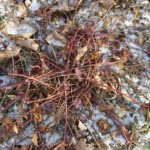
Why now? The purpose of winter mulching is to keep the ground around these plants consistently frozen. Without protection the cycle of freezing and thawing which occurs throughout the season in my Zone 5 garden can cause plants to heave out of the ground and expose their roots to the biting cold and wind.
In addition to newly planted plants, some shallow rooted plants are particularly prone to heaving, according to my friend the horticulturist Ruth Clausen. Included in this group are members of the coral bell clan—heucheras, heucherellas and tiarellas. Heucheras have become so popular in recent years, and indeed I have lost several to heaving. I am determined not to let that happen this winter.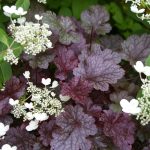
What Qualifies as Winter Mulch? The best ‘mulch’ for your plants is snow, because it keeps the ground consistently frozen and it disappears in the spring, allowing plants to gradually come out of dormancy as temperatures begin to rise. In most parts of the country, however, there is no guarantee the ground will be covered in snow all winter.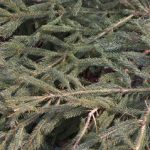
Evergreen Boughs. I use evergreen boughs to protect my garden beds. We always gather greens from the farm where we get our Christmas tree. We’ve noticed that people cut down their tree and leave behind lower branches and other greens, so we sweep them up and bring them home (no charge). Now that the holidays are over, we can cut the branches off our own tree and use those too. I’ve also noticed greens along the side of roads (mostly white pine) that dropped during the infamous Halloween snowstorm in the northeast. Most of those are good for the taking too.
The advantage of evergreen boughs layered on your garden bed is that they are easy to gather up in the spring when temperatures begin to rise. Also, they do not provide a haven for burrowing voles and mice the way leaves or shredded bark can. And they really do shield your plants from the sun, which is what causes thawing. Evergreen boughs can be prickly to handle, so be sure to wear gloves.
What To Know About Houseplants and Your Cat
Last summer we took in a stray kitten who showed up at our back door. Neither my husband nor I had owned a cat since childhood so we were wading into new territory here. Coincident with this we completed our long planned greenhouse off the back of the house and stationed Scout’s litter box in there. As the weather turned colder we brought many of our outdoor plants into the greenhouse to overwinter and Scout was suddenly, and happily, surrounded by plants. 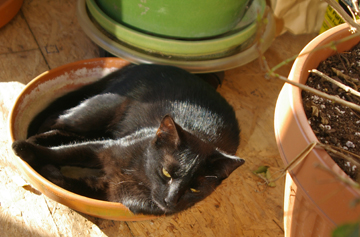
I noticed two types of behavior I didn’t like, and I decided I’d better seek advice. One, she was scratching and digging in the soil of several plants, and kicking the soil onto the floor. Second, she was chewing on some of the plants, and I wondered if this might be unhealthy.
I friend of mine suggested I get in touch with Dr. Lucy Dayton, a retired veterinarian in Helena, Montana, who is also an avid gardener and plantswoman. She immediately appreciated the dilemma I face and she pointed me to a small group of credible websites, steering me clear of the many ‘dubious’ ones on the internet. Here’s what I learned. (the reputable websites are listed at the end of this article).
Poisonous Houseplants Lilies top every list of plants that are poisonous to cats. Even a small amount ingested can cause life threatening kidney failure. If you like Easter lilies keep them away from your cat. While most plants are harmless, there are many plants that are toxic to cats, in varying degrees, and some of them, I learned, are plants that I have in my greenhouse (!), including Amaryllis, Lantana and Begonia. While Scout has exhibited no signs of illness (typically it includes vomiting or diarrhea) I will make sure to keep them out of her reach, and in fact we have moved Scout’s litter box out of the greenhouse.
For a list of plants that are poisonous to cats, click here, or consult your veterinarian. There is also a 24-hour hotline for use in an emergency. The ASPCA’s Animal Poison Control Center is at 888-426-4435. (Have your credit card handy as there may be a charge for this call).
Making Your Plants Less Attractive to Cats According to the Cornell U. College of Veterinary Medicine website, you can try spraying the leaves with water, then sprinkling them with cayenne pepper. Commercial pet repellents serve the same purpose. Try laying mothballs on the soil to see if the smell repels your cat.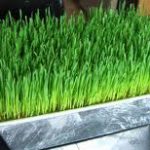
Cornell U. recommends laying a little aluminum foil over the soil to prevent scratching in the dirt, decreasing the odds your cat will turn to the plant as a treat. I tried putting down a piece of screen door screening over the soil and that seems to work. It keeps Scout out and lets the sun in. Small stones would also protect the top surface of soil from her scratching.
Cats Crave Vegetable Matter. The experts say that it is usually indoor cats who eat houseplants because they crave vegetable matter. Our Scout does go outside, but in the winter there isn’t much vegetable matter for her to chew on. You can get around this by adding lettuce or parsley to her food bowl or switching to a food with higher fiber content. You can also plant oat grass, catnip and catmint in a pot for your cat to enjoy. These are safe for cats.
Recommended website for Information on Cats and Poisonous Plants–
http://www.aspca.org/Pet-care/poison-control/Plants.aspx?plant_toxicity=toxic-to-cats
http://www.healthypet.com/PetCare/PetCareArticle.aspx?art_key=655a2b98-fe3f-4162-b9e4-af262ec76c7c
http://www.vet.cornell.edu/fhc/brochures/DestructiveBehavior.html
Gardeners Make Their New Year’s Resolutions
On New Year’s Eve I committed to be a better person in 2012, but now it’s time to make my Gardening New Year’s Resolutions. That’s much more fun!
Please send us your New Year’s Resolutions in the comments section below and we will reward our favorites with Womanswork Rose Leather Gauntlet gloves. All comments must be received by Jan. 31st.
Here are my 5 Gardening New Year’s Resolutions—
- Harvest at least one lemon from the lemon tree growing in my greenhouse
- Grow all of my container annuals for next summer from seed, including Black Eyed Susan vine
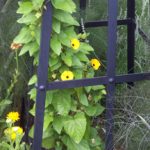
- Memorize the major tree species in our region.(Check back with me in a year on this one)
- Begin replacing the Pachysandra in our front yard with liriope, one of my favorite evergreen groundcovers.
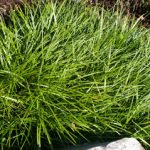


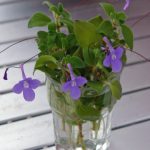


Wonderful post, Thanks